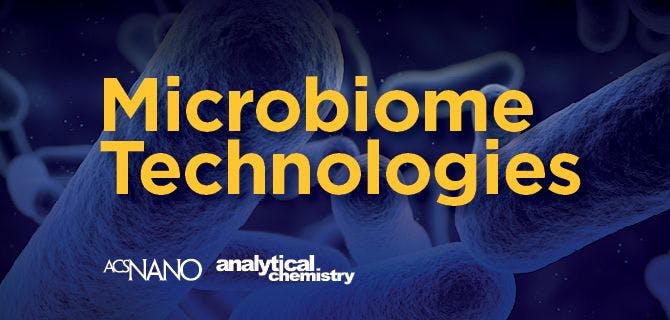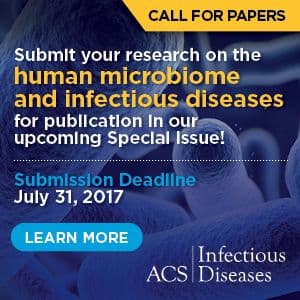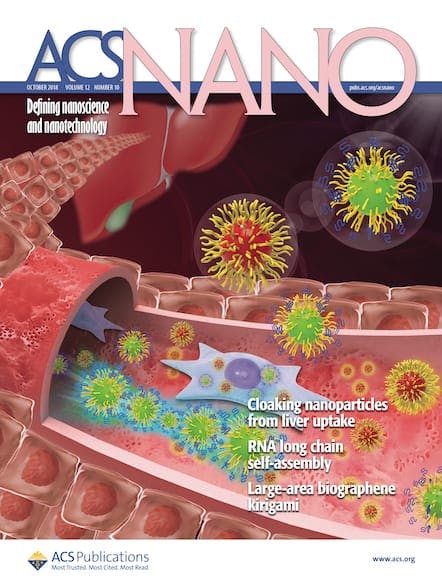The scientific community is learning more about microorganisms and how they interact with each other in microbiomes. Technology is making their discoveries possible and more is needed to advance their research even further. On August 11, 2016, ACS Nano and Analytical Chemistry presented Microbiome Technologies, the second in the three-part #ACSmicrobiome Webinar Series. The webinar […]


On August 11, 2016, ACS Nano and Analytical Chemistry presented Microbiome Technologies, the second in the three-part #ACSmicrobiome Webinar Series. The webinar focused on the current technology researchers are using to study the microbiome and the technology they will need moving forward. It featured Dr. Paul S. Weiss, Editor-in-Chief of ACS Nano; Distinguished Professor of Chemistry & Biochemistry, Distinguished Professor of Materials Science & Engineering, California NanoSystems Institute at the University of California, Los Angeles, and Dr. Pieter Dorrestein, Professor at the University of California, San Diego; Director of the Collaborative Mass Spectrometry Innovation Center; and a Co-Director of the Institute for Metabolomics Medicine in the Skaggs School of Pharmacy & Pharmaceutical Sciences, and Department of Pharmacology.
Technology is Essential to Understanding Microbiomes
Microbiomes are found all over – in and on human bodies, in the ocean, the atmosphere, and the soil. Research on microbiomes touch on many different disciplines, says Weiss, which can create gaps in the understanding of microbiomes from one area of research to another. To address this, “tremendous technologies need to be developed,” he said.
“One of the advantages of the field nanoscience and nanotechnology is that we’ve taught each other how to communicate across fields, and maybe even more than the technology has required,” Weiss said.
To learn more about microbiomes, scientists need the tools to observe, manipulate and measure on the nano level. This will lead to the development of specialized technology. Researchers studying the microbiomes of the ocean, which are strongly connected with local environments, are being aided by new miniaturized, ruggedized technology, Weiss says. The development of new tools, such as these, that manipulate the microbiome will lead to a better understanding of how these systems work.
Digitally Mapping the Human Microbiome
The National Institutes of Health Human Microbiome Project has found that the human body consists of 20,000 human genes and 2 million to 20 million microbial genes. These findings have redefined what it is to be human, Dorrestein says. Microbes are involved in the metabolism of foods and changing immune chemistries. They can determine your weight, or how attractive you are to mosquitoes. Microbes are “the ignored organ” of the human body, he says.
The scientific community has been able to determine what microbes are inside the body, and now the research is shifting to what they are doing to the body and how to take control of that, Dorrestein says.
Dorrestein has developed a three-dimensional (3D) mapping tool, called ili, with Dr. Theodore Alexandrov of the European Molecular Biology Laboratory. The tool allows you to map data, such as where samples are taken on a person’s body, on to a 3D model. This allows researchers to visualize mass spectrometry data, and from there, observe and analyze the data.
To analyze that data, a metabolomics analysis and knowledge capture platform, called Global Natural Products Social Molecular Networking (GNPS) was created. Dorrestein said it launched in August with roughly 13,000 users from 111 countries. The platform allows researchers to upload, store and analyze data, with a predictive computing element, as well. GNPS allows researchers to share and pool their data, which will hopefully allow researchers to crowdsource analysis.
Want to learn more about the technology scientists are using to study microbiomes? You can watch a recording of the full webinar complete with Dr. Weiss and Dr. Dorrestein’s slides through August 10, 2017, just register here.
